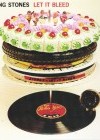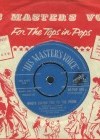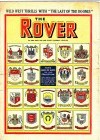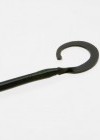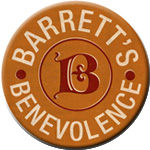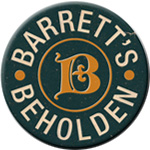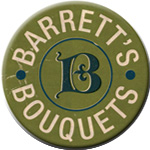‘SIXER’ BOWS OUT AFTER 60 MILLION OF THE BEST
An era has come to an end with the announcement by Marshall’s Amusements that it is to cease production of the legendary Six-o-the-Best caning machine, better known to generations of schoolboys as the ‘Tuppenny Sixer’. Introduced in 1921, the ‘Sixer’ went on to become a familiar feature of the British seaside holiday for the next half-century.
Like most great inventions, it was brilliantly simple. A mechanical schoolteacher, clad in mortarboard and gown, stood brandishing a cane. Behind him, a painted backdrop depicted a typical classroom. In front of him stood a school desk. Customers bent over the desk, inserted coins into a slot on the floor, and received the advertised ‘six of the best’.
The Sixer was the brainchild of the company’s founder, Arthur Marshall, who once saw a man chastising his young son on the beach at Margate. ‘My heart went out to the poor fellow,’ he recalled later. ‘Here’s this chap who has worked hard all year so he can take his family on a day trip to the seaside, and he has to waste his time thrashing his son. I thought to myself: a machine could save him a lot of trouble.’
The Sixer was an immediate success, but not in the way Marshall expected. Originally intended as a disciplinary device, it soon became a huge popular entertainment. Punters queued to go on it, and crowds flocked to watch them. Competitions were organised to see who could take the most punishment. Music hall comedians joked about it, cartoonists lampooned it, and there was even a song – ‘Different Strokes For Different Folks!’ – penned in its honour.
At the height of their popularity, the Sixers were earning more than £500 a week each. This meant a sizeable profit, even allowing for the cost of replacing broken canes. Marshall’s was happy to lend the machines to fetes and charity events, where they raised large sums of money for good causes. During the war, effigies of Hitler were caned in aid of wounded servicemen.
All good things must come to an end, however, and today’s ‘Sixpenny Sixer’ cannot hope to match the popularity of its ‘tuppenny’ forebear. Its retirement comes as no surprise, and it was fitting that the announcement took place at a charity event to celebrate the administering of the 60 millionth stroke of the famous cane.
This is not the end of the story, however, and company chairman Reginald Marshall used the occasion to launch Six-o-the-Best mark II – or rather, ‘Voyage to the Stars,’ as it is now called. The familiar schoolmaster is still in place, but he now wears an astronaut suit, with a glass helmet over his mortarboard. The backdrop is a dark sky with stars and planets, and instead of a desk, punters must bend over a shiny rocket to receive their strokes. In true space-age style, the caning is ‘counted down’ by a recorded voice in the manner of a real launch.
Mr Marshall says that ‘Voyage to the Stars’ represents an exciting future – and he could be right. All the same, there were mixed feelings about the end of the old ‘Sixer’. The mood was summed up by Alf Morris, who has worked for Marshall’s for 43 years, and has happy memories of being caned as a boy.
‘It’s sad to see the old girl go,’ he said. ‘But you have to move with the times, and if this is what the youngsters want, then good luck to them.’









